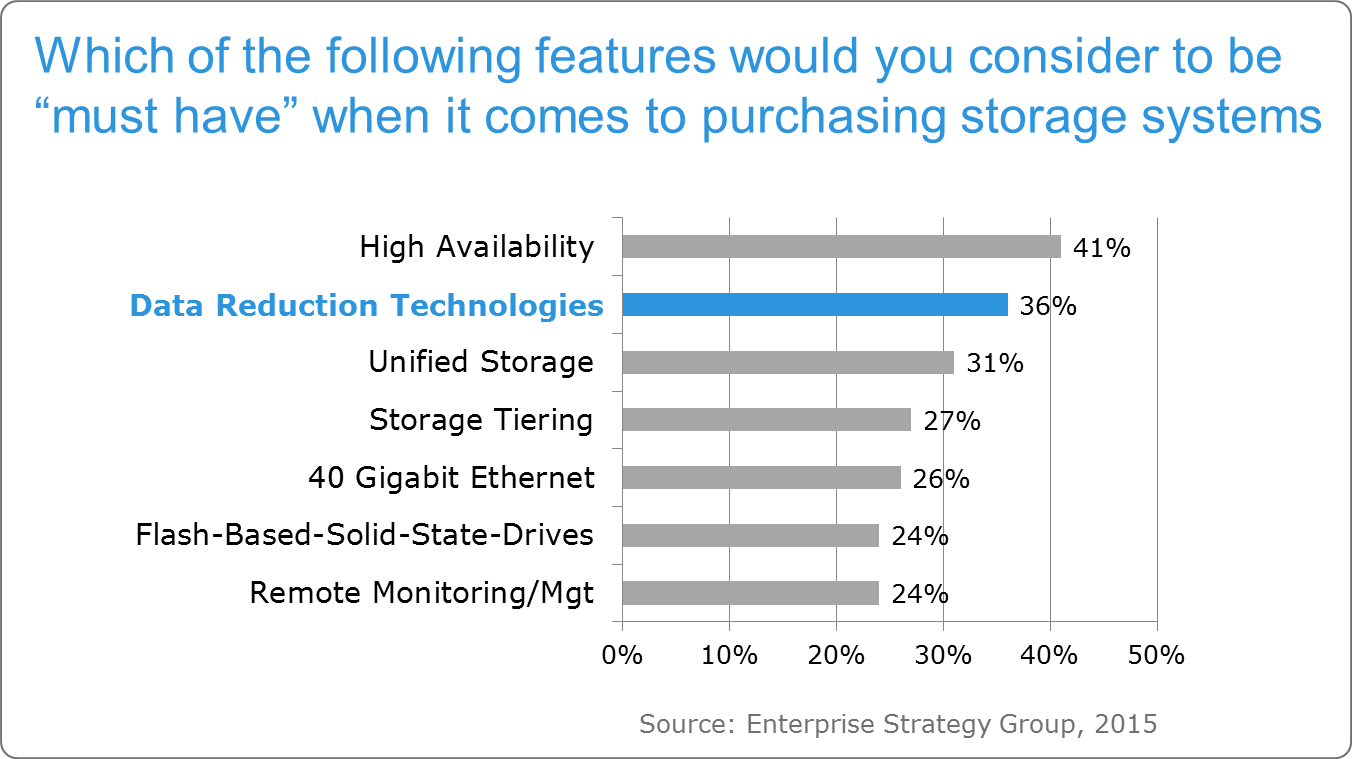Just think about duplicate data for a second. Think about your own computer right now  and how many copies of the same you file are storing, managing and protecting? Just think about when that is multiplied by 100 or 1000 in a virtual desktop environment. What about the attachments that get forwarded around within your email infrastructure?
and how many copies of the same you file are storing, managing and protecting? Just think about when that is multiplied by 100 or 1000 in a virtual desktop environment. What about the attachments that get forwarded around within your email infrastructure?
How much are you spending to store, manage, and protect the exact same “chunk” of data over and over again?
Do you know how much you could save in storage, management, and protection costs by eliminating redundant data? And did you know you can do all this while improving your storage performance?
It comes as no surprise that data reduction technologies are viewed by some as a must have feature. In fact earlier this year, in a customer survey conducted by the Enterprise Strategy Group (ESG), found that data reduction technologies were the second most important “must have feature” driving storage purchasing decisions. Do you agree?
Combine data reduction with intelligent storage tiering and the result is a greater percentage of data residing on the fastest storage tier (for example flash based solid state drives) improving overall performance.
Think about the benefits of Data Reduction technologies:
- Managing data more efficiently and effectively
- Having to manage less data
- Lowering overall infrastructure costs
But did you know that deduplication leads to not only improved efficiencies, better storage utilization, and lower storage costs, but also improved performance?
The hybrid-flash market is huge, and continues to grow at a healthy rate. Basically, utilizing flash drives allows your overall system performance to increase but at what cost? We all know that Solid State Drive (SSD) delivers at least 250x more IOPS than a Hard Disk Drive (HDD) (roughly 5,000 IOPS vs 180 IOPS). We also know that a SSD can cost as much as 8x compared to a HDD. So by mixing SSDs for performance, with HDDs for economies of scale, add in block-level deduplication, thin provisioning, and compression, and now you are able to benefit by an efficient hybrid-flash array, right?Not so fast, as not all hybrid-flash arrays are alike! Does your hybrid-flash storage support true automated storage tiering, extendable caching and 8KB block deduplication?
Don’t worry, with the latest EMC VNX release, we have you covered with up to 3x better performance at half the response time, file support, and expanded use cases.
Read the latest ESG Solution Showcase titled “VNX Drives Performance Up and the Cost of Hybrid Flash Down with Deduplication” that discusses the data reduction market, VNX Block Deduplication value and architectural review, and customer validations. To learn even more about VNX capabilities attend one of the VNX Go Anywhere live webinars.

